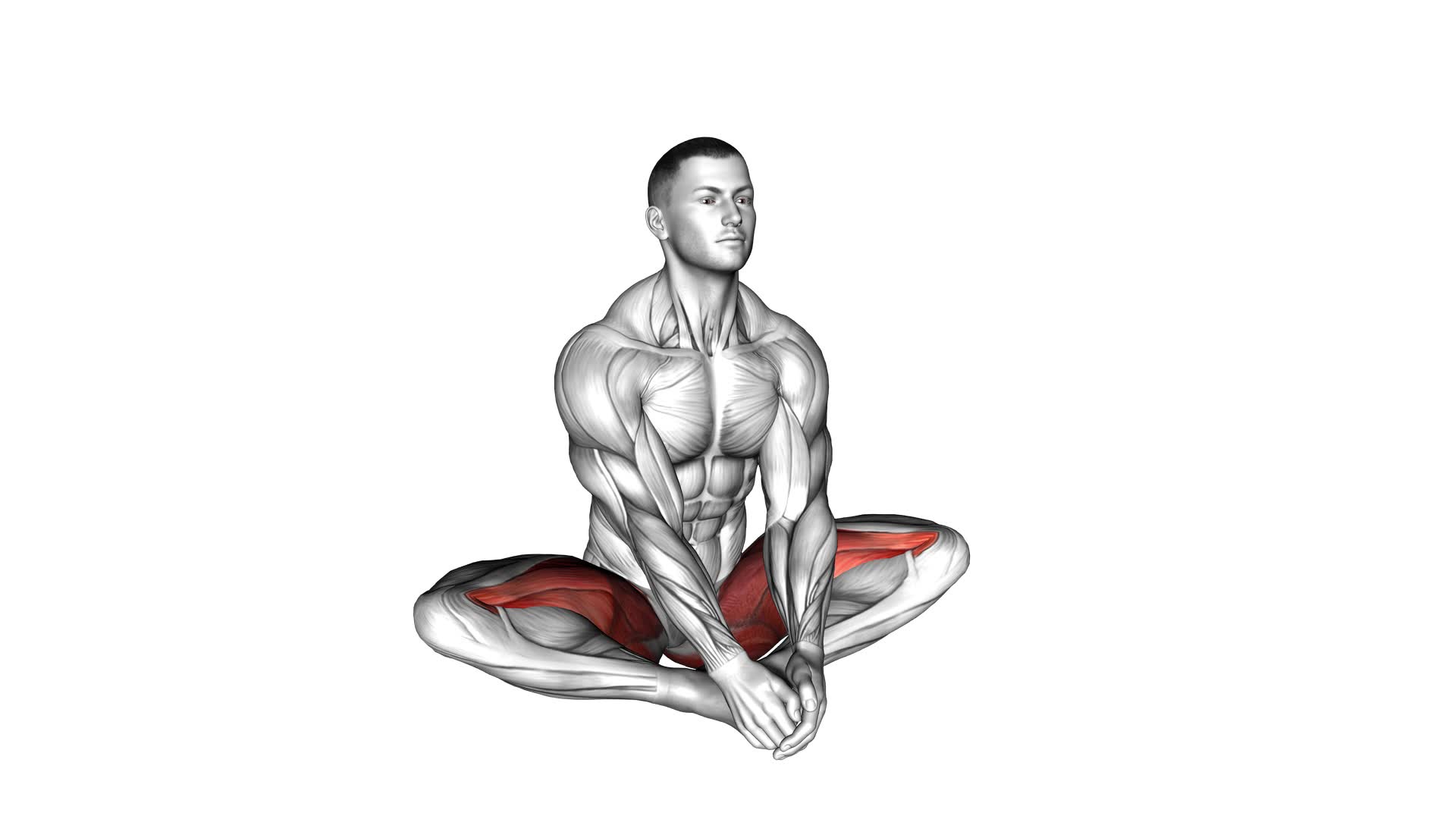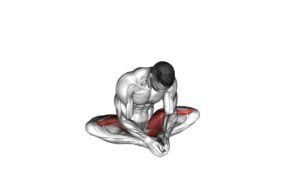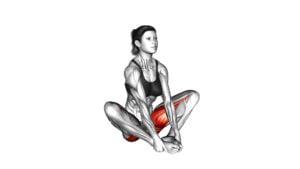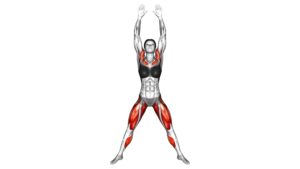Butterfly Yoga Flaps – Video Exercise Guide & Tips

Get ready to flap your way to a stronger and more flexible body with Butterfly Yoga Flaps!
Watch This Exercise Video
This video exercise guide is here to help you master this powerful yoga move. Whether you're a beginner or an advanced yogi, this guide will show you step-by-step how to perform the Butterfly Yoga Flaps with ease.
Say goodbye to common mistakes and hello to a more effective practice.
Get ready to spread your wings and soar to new heights with Butterfly Yoga Flaps!
Key Takeaways
- Butterfly Yoga Flaps improve flexibility by stretching inner thighs and groin.
- They enhance mind-body connection and cultivate mindfulness.
- Butterfly Yoga Flaps are beneficial for athletes or individuals with a wide range of leg movements.
- These flaps promote a sense of calm and relaxation.
Benefits of Butterfly Yoga Flaps
Discover the numerous benefits you can experience from practicing Butterfly Yoga Flaps. This simple yet effective yoga pose offers a range of advantages that can greatly enhance your overall well-being.
One of the primary benefits of Butterfly Yoga Flaps is its ability to improve flexibility. By gently opening and closing your legs in this pose, you're stretching the inner thighs and groin, which can help increase your range of motion over time. This can be especially beneficial for athletes or individuals who engage in activities that require a wide range of leg movements.
In addition to physical benefits, Butterfly Yoga Flaps also promote a strong mind-body connection. As you engage in this pose, focus on your breath and the sensations in your body. This helps to bring your attention inward and cultivate mindfulness. By cultivating this mind-body connection, you can experience a greater sense of calm and relaxation, as well as improved mental clarity.
Incorporating Butterfly Yoga Flaps into your regular yoga practice can provide you with a multitude of benefits. From improving flexibility to strengthening the mind-body connection, this pose is a valuable addition to any yoga routine.
Preparing for the Butterfly Yoga Flaps
To properly prepare for the Butterfly Yoga Flaps, begin by gently warming up your body. Warm-up exercises are crucial to prevent injuries and maximize the benefits of your yoga practice. Before starting the Butterfly Yoga Flaps, it's important to prepare your body with some specific techniques.
First, start with some simple stretching exercises. Stretch your arms overhead, reaching towards the ceiling, and then slowly lower them to your sides. Stretch your legs by doing some standing forward folds or gentle lunges. These stretches will help loosen up your muscles and increase your flexibility.
Next, focus on your hips. The Butterfly Yoga Flaps primarily target the hip muscles, so it's important to pay attention to this area. Perform hip-opening exercises, such as the seated butterfly stretch or the pigeon pose. These poses will help to increase the range of motion in your hips and prepare them for the Butterfly Yoga Flaps.
Additionally, warm up your spine with gentle twists and backbends. These movements will help to mobilize your spine and prepare it for the bending and twisting actions involved in the Butterfly Yoga Flaps.
Remember to listen to your body and go at your own pace. If something feels uncomfortable or painful, modify the exercises or consult with a yoga instructor. By properly preparing your body with these warm-up exercises, you can enhance your performance and reduce the risk of injury during the Butterfly Yoga Flaps.
Step-by-Step Guide to Perform Butterfly Yoga Flaps
To perform Butterfly Yoga Flaps, it's important to master the proper breathing techniques. Focus on inhaling deeply through your nose and exhaling slowly through your mouth. This will help you stay relaxed and centered throughout the exercise.
Additionally, be mindful of common mistakes such as hunching your back or forcing your legs too far down. By avoiding these errors, you can fully experience the benefits of Butterfly Yoga, which include improved flexibility, posture, and relaxation.
Breathing Techniques for Flaps
Use deep, controlled breaths to enhance your performance of Butterfly Yoga Flaps. Breathing techniques are an integral part of this exercise, as they help you relax and maintain focus.
Here are four key techniques to incorporate into your practice:
- Diaphragmatic breathing: Breathe deeply into your abdomen, allowing your belly to rise and fall with each breath. This technique promotes relaxation and reduces tension.
- Ujjayi breath: Engage in a slight constriction at the back of your throat as you breathe in and out. This technique creates a soothing sound similar to ocean waves, promoting a sense of calm and focus.
- Equal inhales and exhales: Aim for an equal duration of inhalation and exhalation, allowing for a balanced flow of energy throughout your body.
- Synchronized breath with movement: Coordinate your breath with the flapping motion of your arms, inhaling as you raise them and exhaling as you lower them.
By incorporating these breathing techniques, you can deepen your practice and experience the full benefits of Butterfly Yoga Flaps.
Now, let's explore some common mistakes to avoid.
Common Mistakes to Avoid
To perform Butterfly Yoga Flaps correctly and avoid common mistakes, make sure you consistently practice with proper form and alignment.
One common mistake to avoid isn't maintaining proper alignment throughout the movement. When performing Butterfly Yoga Flaps, it's important to keep your spine straight and engage your core muscles. This will help prevent strain on the lower back and ensure that you're targeting the correct muscles.
Another mistake to avoid isn't focusing on improving flexibility. Butterfly Yoga Flaps are a great exercise for increasing flexibility in the hips and inner thighs. Be sure to take your time and gradually increase the range of motion as your flexibility improves.
Benefits of Butterfly Yoga
To perform Butterfly Yoga Flaps correctly and reap their benefits, follow this step-by-step guide:
- Increased flexibility: Butterfly Yoga Flaps help to open up the hips and groin area, improving flexibility and range of motion in these areas.
- Strengthened core muscles: The flapping motion engages the core muscles, helping to strengthen and tone your abdominal muscles.
- Improved posture: Regular practice of Butterfly Yoga Flaps can help improve your posture by stretching and strengthening the muscles in your back and shoulders.
- Enhanced relaxation: The rhythmic flapping motion combined with deep breathing can promote a sense of calm and relaxation, reducing stress and anxiety.
By incorporating Butterfly Yoga Flaps into your routine, you can experience these benefits and more.
Now, let's explore modifications and variations for all levels to ensure everyone can participate and enjoy the practice.
Modifications and Variations for All Levels
Now let's explore some modifications and variations for all levels in Butterfly Yoga Flaps.
Whether you're a beginner looking for beginner-friendly poses or an expert seeking a challenge, there are options for everyone.
Additionally, if you have any injuries or limitations, we'll discuss how to modify the poses to ensure a safe and effective practice.
Beginner-Friendly Yoga Poses
Start your yoga practice with beginner-friendly yoga poses that offer modifications and variations for all levels. These poses will help you improve your flexibility and build a strong foundation for your yoga journey. Here are four poses to get you started:
- Mountain Pose (Tadasana): Stand tall with your feet hip-width apart, grounding down through your feet. Engage your core and lengthen your spine. This pose helps improve posture and promotes body awareness.
- Child's Pose (Balasana): Kneel on the floor and sit back on your heels. Lower your torso down, resting your forehead on the mat. Extend your arms in front of you or rest them alongside your body. This pose gently stretches the back and hips, promoting relaxation and stress relief.
- Downward-Facing Dog (Adho Mukha Svanasana): Start on your hands and knees, then lift your hips up and back, creating an inverted V shape with your body. Press your palms into the mat and lengthen your spine. This pose stretches the hamstrings, shoulders, and back, while also building strength in the arms and legs.
- Cat-Cow Pose (Marjaryasana/Bitilasana): Begin on your hands and knees, with your wrists directly below your shoulders and your knees below your hips. Inhale, arch your back, and lift your head and tailbone up for Cow Pose. Exhale, round your spine, and tuck your chin towards your chest for Cat Pose. This pose improves spinal flexibility and releases tension in the back.
Remember to listen to your body and modify the poses as needed. Take it slow and enjoy the journey of discovering your body's capabilities through these beginner-friendly yoga poses.
Challenging Variations for Experts
Continue exploring your yoga practice and challenge yourself with these modifications and variations suitable for all levels. For advanced practitioners looking to take their practice to the next level, there are advanced modifications and techniques that can provide a new level of challenge and intensity.
One advanced modification you can try is the extended butterfly pose. Start in a seated position with the soles of your feet together and your knees bent. Instead of keeping your hands on your feet, extend your arms forward and lower your torso towards the ground. This variation increases the stretch in your hips and groin, as well as challenges your balance and core strength.
Another advanced technique is the flying butterfly pose. Begin in a seated position and lift your feet off the ground, bringing your knees towards your chest. Extend your arms out to the sides and engage your core to balance in this challenging position. This pose not only strengthens your core and upper body, but also requires focus and concentration.
Modifying for Injuries
For those dealing with injuries, modifying yoga poses can help accommodate your needs and allow you to continue practicing at your own pace and level of comfort. Here are four ways you can modify poses to prevent further injury and promote healing:
- Use props: Props such as blocks, straps, and bolsters can provide support and stability, making poses more accessible and reducing strain on injured areas.
- Adjust the range of motion: If a pose requires a deep stretch or movement that aggravates your injury, modify it by reducing the range of motion. Gradually increase the range as your injury heals.
- Focus on alignment: Paying attention to proper alignment can help protect vulnerable areas. Adjust your positioning to ensure you maintain a safe and stable posture.
- Seek professional guidance: If you're unsure about modifying poses for your specific injury, consult with a qualified yoga instructor or healthcare professional who can provide personalized guidance and modifications.
Common Mistakes to Avoid in Butterfly Yoga Flaps
To maximize the benefits of Butterfly Yoga Flaps, make sure to steer clear of these common mistakes.
One of the most common mistakes isn't maintaining the correct form. When performing Butterfly Yoga Flaps, it's important to keep your spine straight and your shoulders relaxed. Avoid slouching or rounding your back, as this can strain your lower back and prevent you from fully engaging your core muscles.
Additionally, make sure to keep your knees relaxed and allow them to drop naturally towards the ground. Avoid forcing your knees down or bouncing them, as this can lead to injury.
Another common mistake is rushing through the movement. Take your time and focus on the quality of each flap. Slow and controlled movements will help you engage the correct muscles and improve your flexibility over time.
Lastly, remember to breathe deeply throughout the exercise. Holding your breath can increase tension in your body and limit the effectiveness of the movement. So, take deep breaths in and out as you flap your legs, allowing your body to relax and release any tension.
Tips to Enhance Your Butterfly Yoga Flaps Practice
To enhance your Butterfly Yoga Flaps practice, focus on maintaining a strong core throughout each movement. A strong core will help you stabilize your body and maintain proper alignment. Here are some tips to enhance your practice and improve flexibility:
- Engage your core: Throughout each movement, focus on engaging your abdominal muscles. This will help you maintain stability and control in your body, allowing you to move with grace and ease.
- Breathe deeply: Deep breathing is essential in any yoga practice. As you perform the Butterfly Yoga Flaps, focus on taking deep inhales and exhales. This will help you relax your body and enhance your flexibility.
- Stretch gently: As you move through the Butterfly Yoga Flaps, remember to stretch gently and avoid pushing yourself too far. Listen to your body and only go as far as feels comfortable. Over time, you'll gradually increase your flexibility.
- Maintain proper alignment: Pay attention to your posture and alignment throughout the practice. Keep your spine straight, shoulders relaxed, and chin parallel to the floor. Proper alignment will help prevent injuries and ensure that you get the most out of your practice.
Frequently Asked Questions
How Many Calories Can You Burn by Doing Butterfly Yoga Flaps?
Butterfly yoga flaps can be a great addition to your workout routine. They not only help in toning your muscles but also have numerous yoga benefits.
While the exact number of calories burned during butterfly yoga flaps can vary based on factors like intensity and duration, it's generally considered a low-impact exercise.
If you're looking for alternative exercises to burn more calories, you can try high-intensity interval training or cardio workouts like running or swimming.
Can Butterfly Yoga Flaps Help Improve Flexibility?
Butterfly yoga flaps can definitely help improve flexibility. By incorporating different variations of butterfly yoga flaps into your practice, you can target different muscle groups and increase your range of motion.
The benefits of butterfly yoga flaps include stretching and strengthening the hips, groin, and lower back muscles. Regularly practicing this pose will gradually enhance your flexibility, making it easier for you to perform other yoga poses and daily activities with greater ease and comfort.
Is It Safe to Practice Butterfly Yoga Flaps During Pregnancy?
During pregnancy, it's important to consider modifications for your yoga practice.
When it comes to butterfly yoga flaps, it's crucial to prioritize safety. Before attempting this pose, consult with your healthcare provider to ensure it's suitable for you.
While butterfly yoga flaps can provide benefits like stretching the hips and lower back, it's essential to take precautions. Avoid excessive pressure on the abdomen and listen to your body, making adjustments as needed.
Can Butterfly Yoga Flaps Help Relieve Lower Back Pain?
Butterfly yoga flaps can indeed help relieve lower back pain. By engaging the muscles in your lower back and strengthening your core, these exercises provide support and stability to the spine.
Additionally, butterfly yoga flaps promote good posture by stretching the chest and shoulders and opening up the hips. This can help alleviate the strain on your lower back caused by poor posture.
Incorporating butterfly yoga flaps into your routine can improve your overall well-being and contribute to better posture.
Are There Any Specific Breathing Techniques to Follow During Butterfly Yoga Flaps?
When practicing butterfly yoga flaps, it's important to focus on your breath control. By incorporating specific breathing techniques, you can enhance the benefits of deep breathing during this exercise.
Deep breathing helps to calm the mind, increase oxygen flow, and promote relaxation. By inhaling deeply and exhaling fully, you can release tension in your body and create a sense of balance.
Remember to pay attention to your breath throughout the practice to fully reap its benefits.
Conclusion
In conclusion, Butterfly Yoga Flaps can be a beneficial exercise for increasing flexibility in the hips and lower back.
By following the step-by-step guide and making necessary modifications, anyone can practice this pose at their own level.
Avoiding common mistakes and incorporating the provided tips will help enhance your practice.
So, grab your mat and give Butterfly Yoga Flaps a try to experience the physical and mental benefits it offers.

Author
Years ago, the spark of my life’s passion ignited in my mind the moment I stepped into the local gym for the first time. The inaugural bead of perspiration, the initial endeavor, the very first surge of endorphins, and a sense of pride that washed over me post-workout marked the beginning of my deep-seated interest in strength sports, fitness, and sports nutrition. This very curiosity blossomed rapidly into a profound fascination, propelling me to earn a Master’s degree in Physical Education from the Academy of Physical Education in Krakow, followed by a Sports Manager diploma from the Jagiellonian University. My journey of growth led me to gain more specialized qualifications, such as being a certified personal trainer with a focus on sports dietetics, a lifeguard, and an instructor for wellness and corrective gymnastics. Theoretical knowledge paired seamlessly with practical experience, reinforcing my belief that the transformation of individuals under my guidance was also a reflection of my personal growth. This belief holds true even today. Each day, I strive to push the boundaries and explore new realms. These realms gently elevate me to greater heights. The unique combination of passion for my field and the continuous quest for growth fuels my drive to break new ground.



